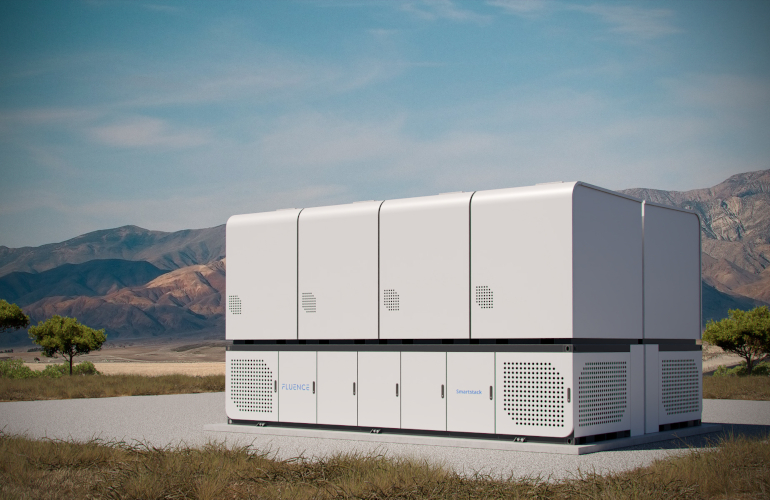SEIA Pushing for Grid Interconnection Reforms
The Solar Energy Industries Association (SEIA) has submitted new comments in response to the Federal Energy Regulatory Commission’s (FERC) Notice of Proposed Rulemaking on interconnection reforms that can speed clean energy deployment.
SEIA commended FERC for taking initial steps on critical reforms but said that transmission providers, which are responsible for connecting clean energy projects to the grid, must help reduce interconnection delays. Under the current rules, only interconnection customers face penalties. New incentives, time limits and related changes could help to clear the interconnection backlog, which has swelled to more than 1,000 GW of clean electricity generation and storage projects.
“Thousands of renewable energy projects are stuck in interconnection queues across the country, and without smart reforms, many of them will never see the light of day,” says Abigail Ross Hopper, president and CEO of SEIA. “These challenges will only compound over the next decade as project developers aim to take advantage of the Inflation Reduction Act (IRA). But they are not insurmountable. FERC has an important opportunity to add more accountability and transparency measures to an otherwise opaque process that must change if we are to realize the full benefits of this landmark climate law.”
The comments, written by SEIA’s director of energy markets and counsel, Melissa Alfano, call for transmission providers to supply more upfront information about grid conditions. This will enable developers to make more efficient project siting decisions, which would lead to lower network upgrade costs and ultimately lower costs to consumers.
Because transmission owners are not required to share information on grid conditions, interconnection is largely a blind process for developers. More transparency around grid conditions could remedy information gaps and enable developers to make more informed decisions throughout the interconnection process.
SEIA also stressed the importance of efficiency and supported the commission’s proposals to strengthen processes that would enable developers to add an energy storage component to existing projects or projects already in the interconnection queue. Energy storage boosts grid reliability, and accelerating review for these projects would benefit developers, transmission providers and ratepayers alike.
SEIA is also urging FERC to drop its proposal for steep withdrawal penalties because it could incentivize less viable projects to stay in the interconnection queue and it unfairly penalizes developers for a process that is largely out of their control.
“While we are glad that FERC is taking action on interconnection, we’re urging the commission to take a closer look at its proposals to ensure there’s an equitable solution for all parties involved,” Hopper says. “Over the next decade, interconnection reform will continue to be a top priority for SEIA as we look to add hundreds of gigawatts of clean energy to the grid.”
SEIA Pushing for Grid Interconnection Reforms
The Solar Energy Industries Association (SEIA) has submitted new comments in response to the Federal Energy Regulatory Commission’s (FERC) Notice of Proposed Rulemaking on interconnection reforms that can speed clean energy deployment.
SEIA commended FERC for taking initial steps on critical reforms but said that transmission providers, which are responsible for connecting clean energy projects to the grid, must help reduce interconnection delays. Under the current rules, only interconnection customers face penalties. New incentives, time limits and related changes could help to clear the interconnection backlog, which has swelled to more than 1,000 GW of clean electricity generation and storage projects.
“Thousands of renewable energy projects are stuck in interconnection queues across the country, and without smart reforms, many of them will never see the light of day,” says Abigail Ross Hopper, president and CEO of SEIA. “These challenges will only compound over the next decade as project developers aim to take advantage of the Inflation Reduction Act (IRA). But they are not insurmountable. FERC has an important opportunity to add more accountability and transparency measures to an otherwise opaque process that must change if we are to realize the full benefits of this landmark climate law.”
The comments, written by SEIA’s director of energy markets and counsel, Melissa Alfano, call for transmission providers to supply more upfront information about grid conditions. This will enable developers to make more efficient project siting decisions, which would lead to lower network upgrade costs and ultimately lower costs to consumers.
Because transmission owners are not required to share information on grid conditions, interconnection is largely a blind process for developers. More transparency around grid conditions could remedy information gaps and enable developers to make more informed decisions throughout the interconnection process.
SEIA also stressed the importance of efficiency and supported the commission’s proposals to strengthen processes that would enable developers to add an energy storage component to existing projects or projects already in the interconnection queue. Energy storage boosts grid reliability, and accelerating review for these projects would benefit developers, transmission providers and ratepayers alike.
SEIA is also urging FERC to drop its proposal for steep withdrawal penalties because it could incentivize less viable projects to stay in the interconnection queue and it unfairly penalizes developers for a process that is largely out of their control.
“While we are glad that FERC is taking action on interconnection, we’re urging the commission to take a closer look at its proposals to ensure there’s an equitable solution for all parties involved,” Hopper says. “Over the next decade, interconnection reform will continue to be a top priority for SEIA as we look to add hundreds of gigawatts of clean energy to the grid.”
Original Source: https://solarindustrymag.com/seia-pushing-for-grid-interconnection-reforms














